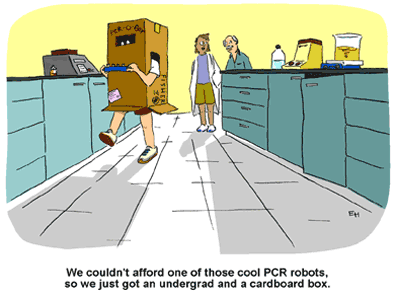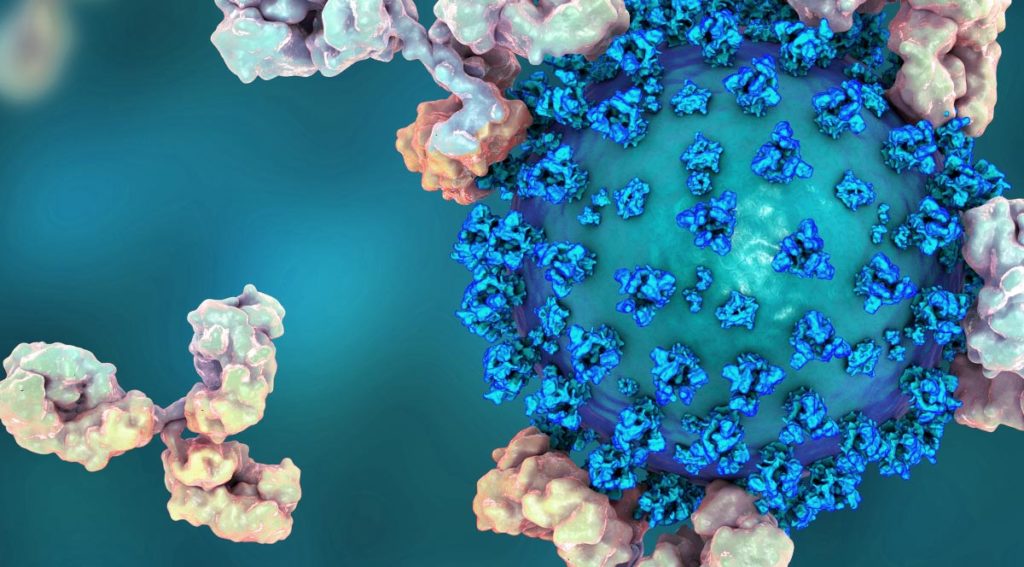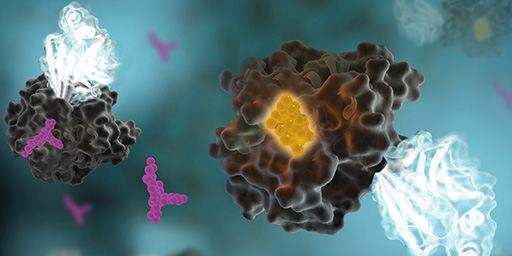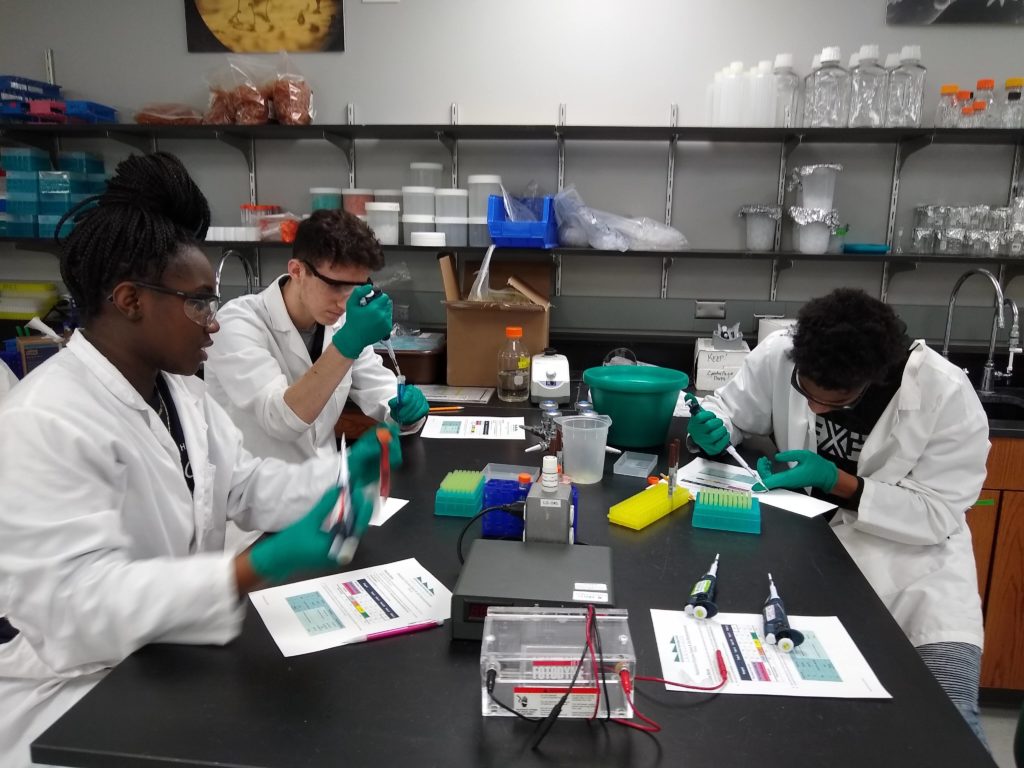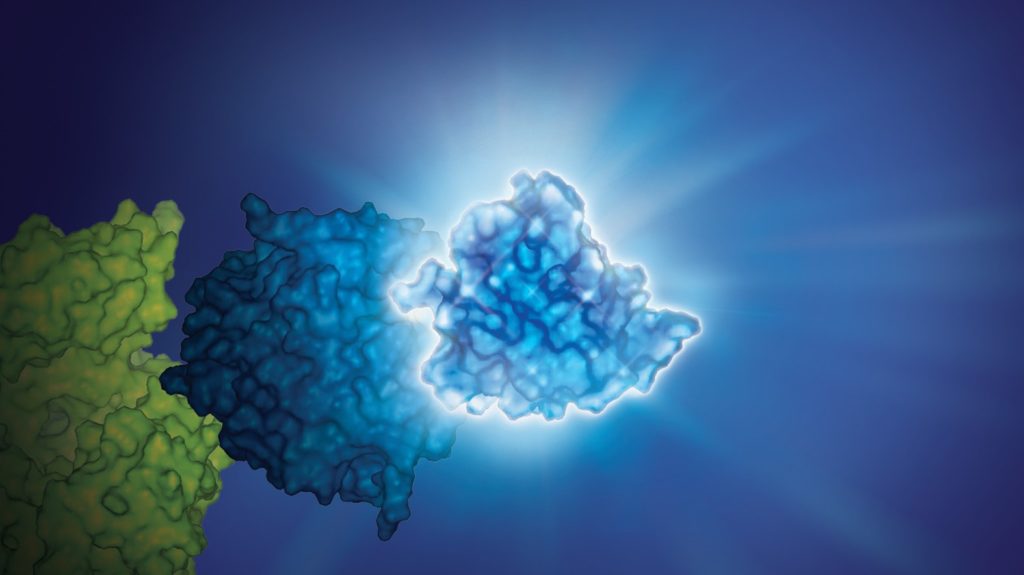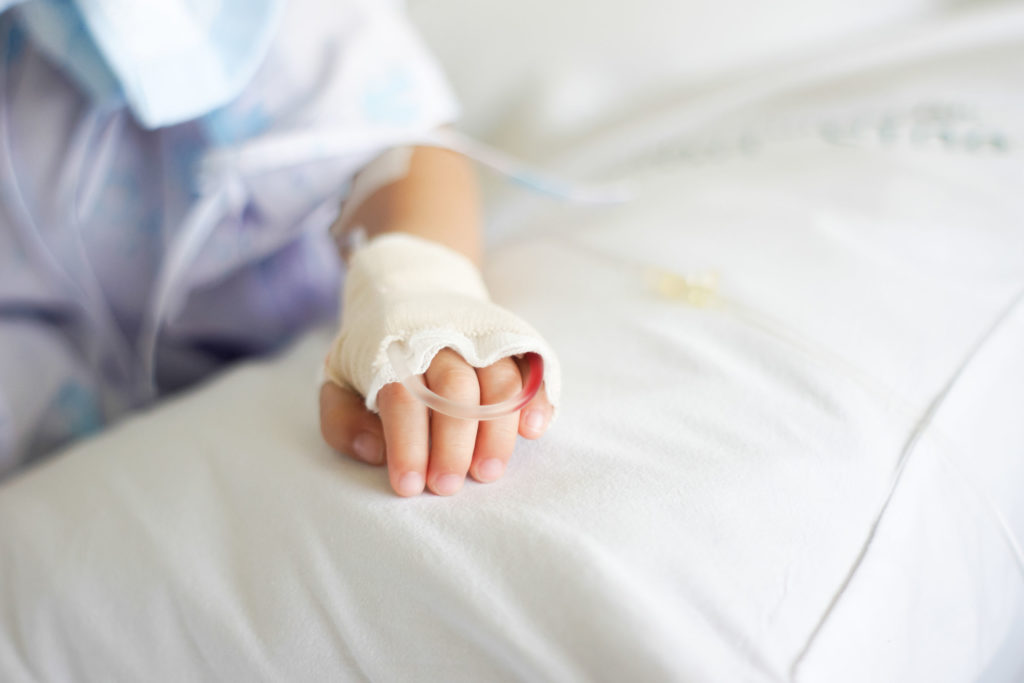Heading into 2020, we realized that our Cartoon Lab was reaching a milestone: the 100th cartoon! We asked the “official” Promega Cartoonist Ed Himelblau to list his Top Five Cartoons and what inspired them. See what he has chosen in his own words:
This was the first of my cartoons that Promega published and it’s still one of my favorites. The file on my computer is dated February, 1999. I have been an undergraduate in a lab. I’ve mentored undergraduates in lab. Today I have lots of undergraduates working in my plant genetics lab at Cal Poly in San Luis Obispo. For the record, I enjoy having undergraduates in the lab and I never make them dress like robots. In this cartoon, I particularly like the centrifuge and stir plate on the right. I’ve always tried to put something in each cartoon (a tube rack, an enzyme shipping box, a desiccator) that make molecular biologists say, “I know that!”
